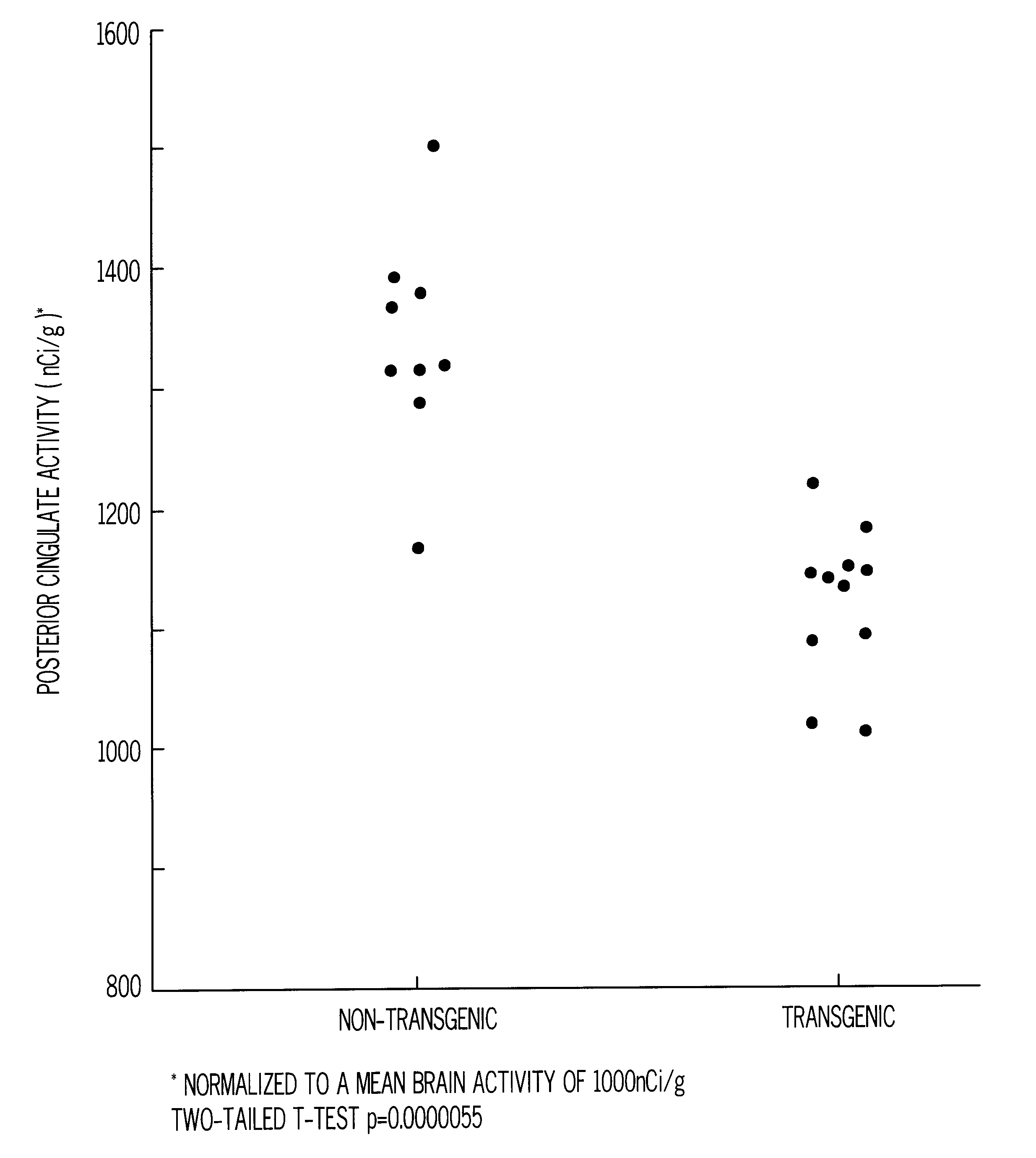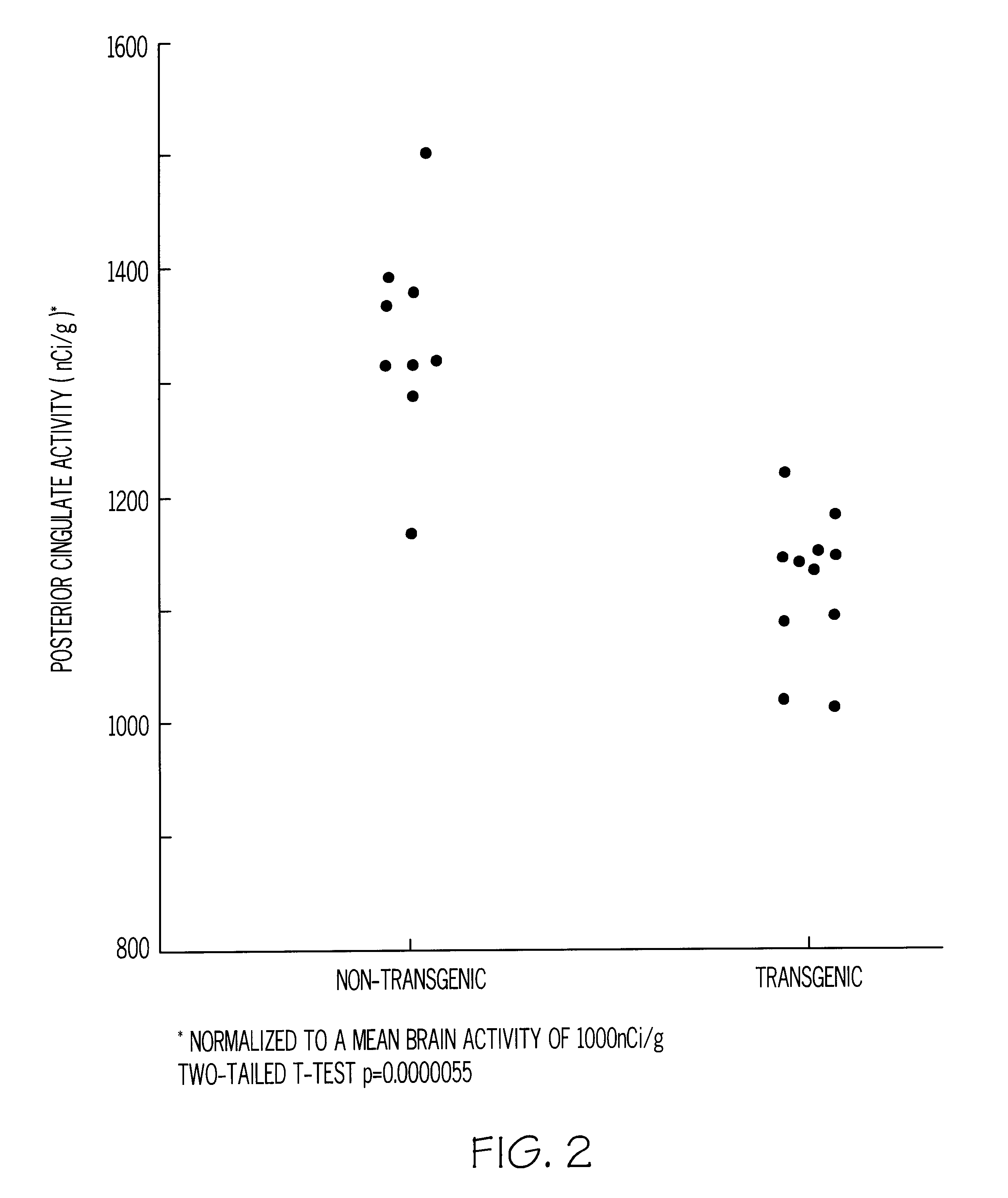Methods for tracking the progression of Alzheimer's disease identifying treatment using transgenic mice
a technology of alzheimer's disease and transgenic mice, which is applied in the field of tracking the progression of alzheimer's disease identifying treatment using transgenic mice, can solve the problems of inability to control bladder or bowel functions, and inability to move around or communicate with others, etc., and achieves the effects of physical exhaustion, and reducing the number of patients
- Summary
- Abstract
- Description
- Claims
- Application Information
AI Technical Summary
Benefits of technology
Problems solved by technology
Method used
Image
Examples
example 1
Positron emission tomography (PET) studies find that persons with Alzheimer's disease have a characteristic pattern of reductions in fluorodeoxyglucose (FDG) uptake and that these reductions become more pronounced during the course of the illness. The largest reduction is in the posterior cingulate cortex, which is pathologically affected in Alzheimer's disease, becomes apparent prior to the onset of cognitive impairment in persons at genetic risk for the disorder, and might provide the most sensitive index of the pathological changes that herald the onset of dementia. Transgenic "PDAPP" mice who over express the V717F .beta.-amyloid precursor protein (APP) progressively develop several pathological features of Alzheimer's disease, including amyloid deposits, neuritic plaques, synaptic loss, astrocytosis, and micro gliosis in the hippocampus and cortex. In this study, we used FDG autoradiography to compare aged transgenic mice homozygous for V717F APP with their non-transgenic, litt...
example 2
In order to determine the extent to which the reduction in posterior cingulate activity observed in aged transgenic mice (see EXAMPLE 1) is apparent prior to the accumulation of amyloid plaques (which first appear when these transgenic mice are about 6-9 months of age) or progresses with age (i.e., is an indicator of Alzheimer's disease progression), FDG autoradiography was subsequently used to study 10 young transgenic mice and 10 young non-transgenic mice (all 3.6 months of age).
After normalizing regional data for the variation in whole brain measurements using the mean activity of the 33 regions samples in every young and aged animal, the difference in posterior cingulate activity between the young transgenic and non-transgenic mice was not statistically significant (young TG: 1135.+-.135 nCi / g; young NTG: 1204.+-.89 nCi / g; two-tailed t-test, p=0.19), while posterior cingulate activity remained significantly lower in the aged transgenic mice than in the aged non-transgenic mice (...
PUM
| Property | Measurement | Unit |
|---|---|---|
| temperatures | aaaaa | aaaaa |
| thick | aaaaa | aaaaa |
| functional brain imaging | aaaaa | aaaaa |
Abstract
Description
Claims
Application Information
 Login to View More
Login to View More - R&D
- Intellectual Property
- Life Sciences
- Materials
- Tech Scout
- Unparalleled Data Quality
- Higher Quality Content
- 60% Fewer Hallucinations
Browse by: Latest US Patents, China's latest patents, Technical Efficacy Thesaurus, Application Domain, Technology Topic, Popular Technical Reports.
© 2025 PatSnap. All rights reserved.Legal|Privacy policy|Modern Slavery Act Transparency Statement|Sitemap|About US| Contact US: help@patsnap.com



